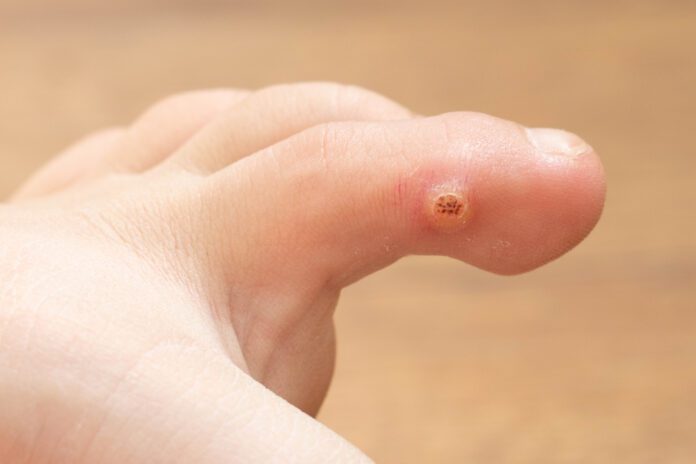Overview Of Warts And Plantar Warts
Warts and plantar warts are small, usually painless growths on the skin. Most of the time they are harmless. They are caused by a virus called human papillomavirus (HPV). There are more than 150 types of HPV viruses. Some types of warts are spread through sex.
Commonly Associated With
Plane juvenile warts; Periungual warts; Subungual warts; Plantar warts; Verruca; Verrucae planae juveniles; Filiform warts; Verruca vulgaris
Causes Of Warts And Plantar Warts
All warts can spread from one part of your body to another. Warts can spread from person to person by contact, especially sexual contact.
Symptoms Of Warts And Plantar Warts
Most warts are raised and have a rough surface. They may be round or oval. The spot where the wart is may be lighter or darker than your skin. In rare cases, warts are black.
Some warts have smooth or flat surfaces.
Some warts may cause pain. Different types of warts include:
- Common warts often appear on the hands, but they can grow anywhere.
- Flat warts are generally found on the face and forehead. They are common in children. They are less common in teens and rare in adults.
- Genital warts usually appear on the genitals, in the pubic area, and in the area between the thighs. They can also appear inside the vagina and anal canal.
- Plantar warts found on the soles of the feet. They can be very painful. Having many of them on your feet may cause problems walking or running.
- Subungual and periungual warts appear under and around the fingernails or toenails.
- Mucosal papillomas occur on mucous membranes, mostly in the mouth or vagina, and are white.
Exams & Tests
Your health care provider will look at your skin to diagnose warts.
You may have a skin biopsy to confirm the wart is not another type of growth, such as skin cancer.
Treatment Of Warts And Plantar Warts
Your provider can treat a wart if you do not like how it looks or if it is painful.
DO NOT attempt to remove a wart yourself by burning, cutting, tearing, picking, or by any other method.
MEDICINES
Over-the-counter medicines are available to remove warts. Ask your provider which medicine is right for you.
DO NOT use over-the-counter wart medicines on your face or genitals. Warts in these areas need to be treated by a provider.
To use wart-removal medicine:
- File the wart with a nail file or emery board when your skin is damp (for example, after a shower or bath). This helps remove dead tissue. Do not use the same emery board on your nails.
- Put the medicine on the wart every day for several weeks or months. Follow the instructions on the label.
- Cover the wart with a bandage.
OTHER TREATMENTS
Special foot cushions can help ease the pain from plantar warts. You can buy these at drugstores without a prescription. Use socks. Wear shoes with plenty of room. Avoid high heels.
Your provider may need to trim away thick skin or calluses that form over warts on your foot or around nails.
Your provider may recommend the following treatments if your warts do not go away:
- Stronger (prescription) medicines
- A blistering solution
- Freezing the wart (cryotherapy) to remove it
- Burning the wart (electrocautery) to remove it
- Laser treatment for difficult to remove warts
- Immunotherapy, which gives you a shot of a substance that causes an allergic reaction and helps the wart go away
- Imiquimod or veregen, which are applied to warts
- Genital warts are treated in a different way than most other warts.



